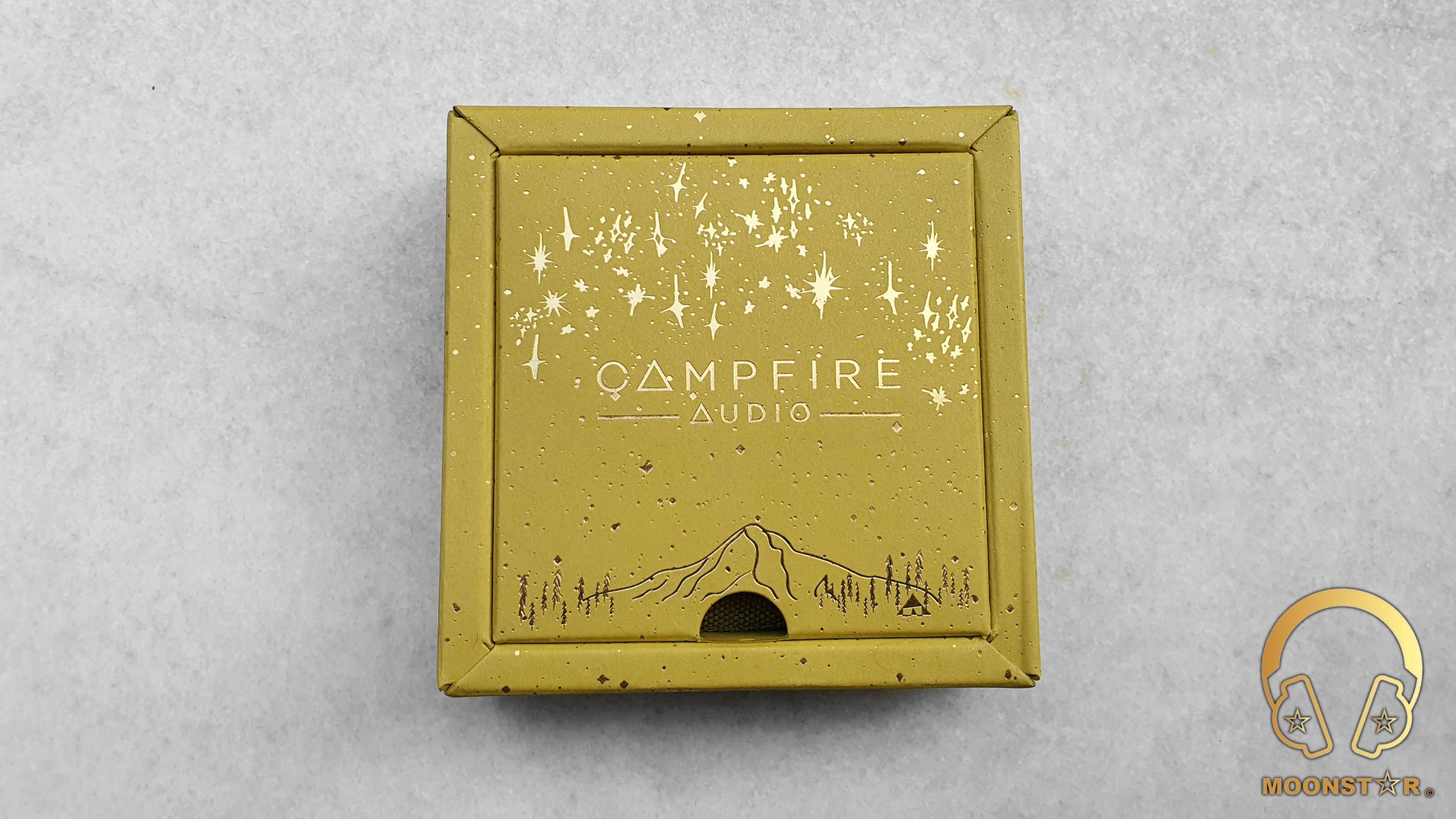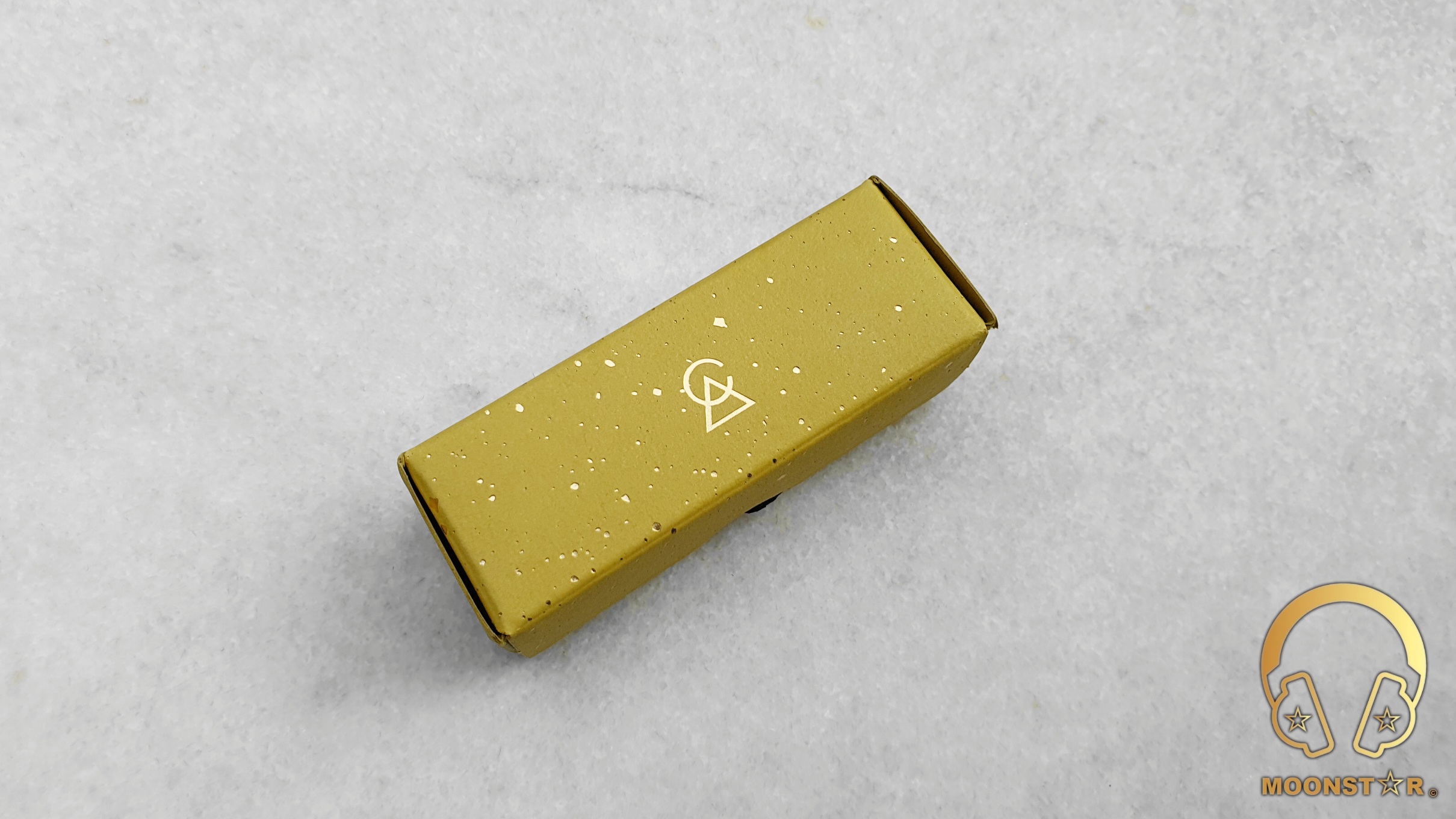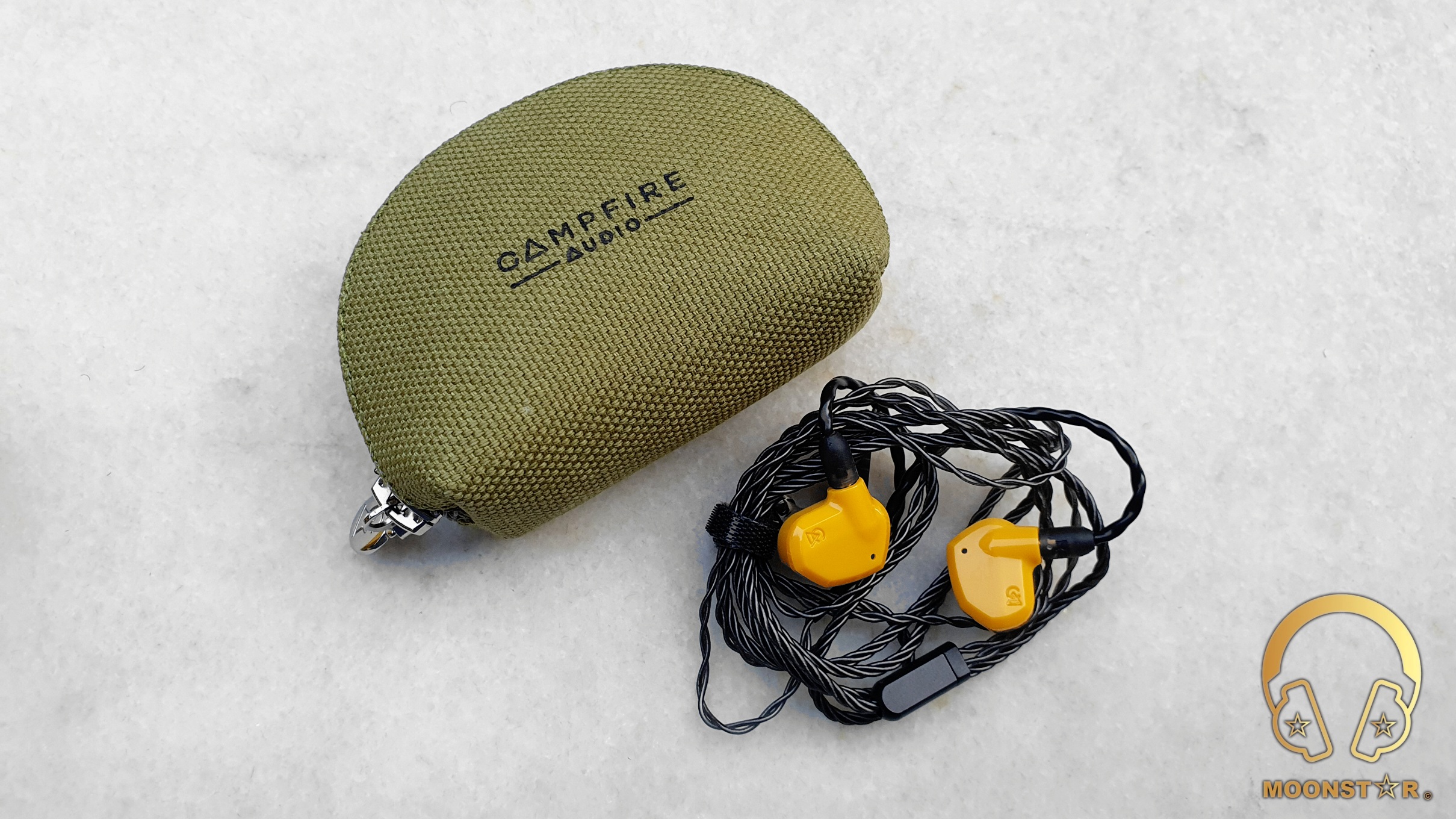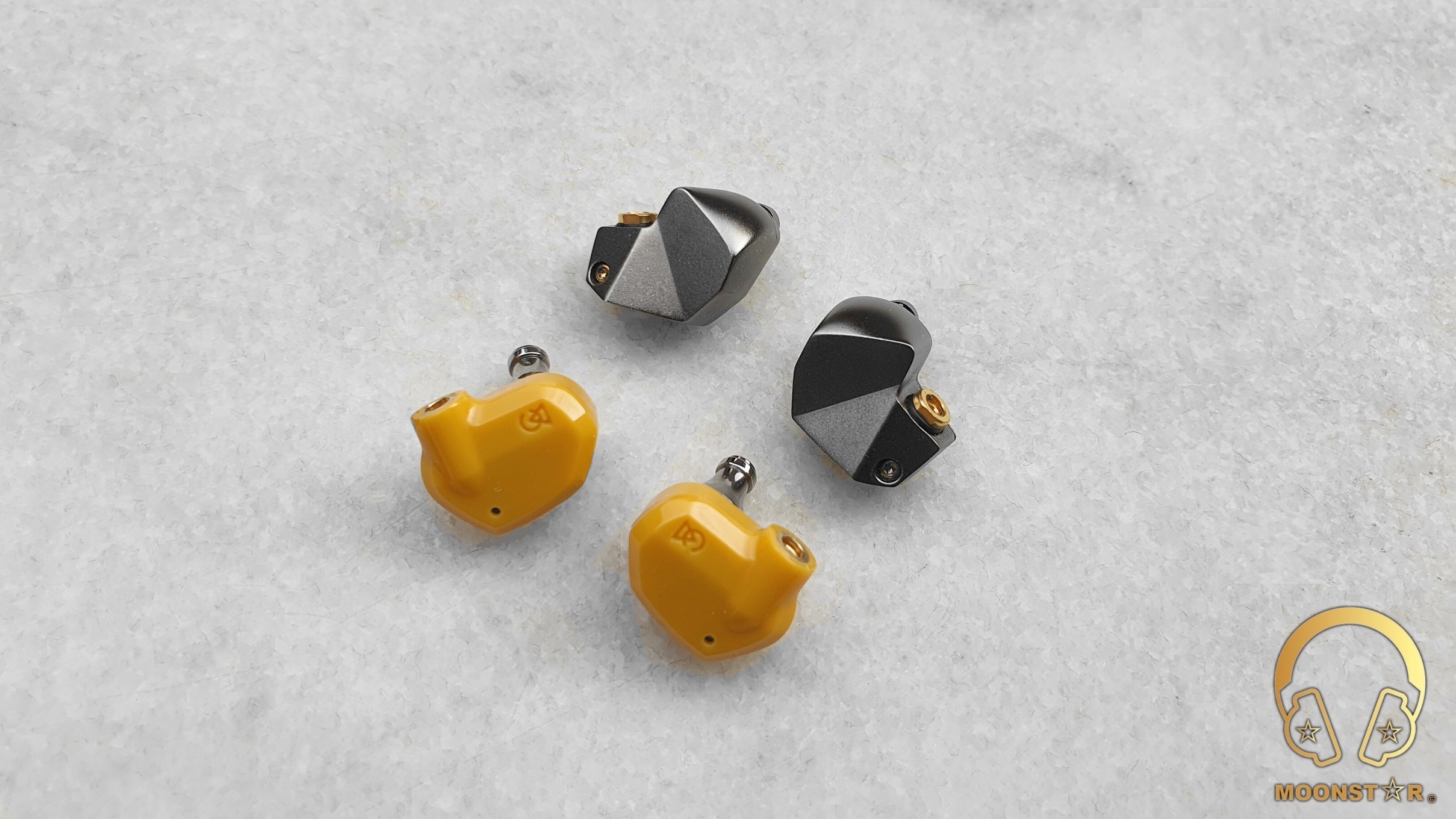Campfire Audio Honeydew IEM Review

Campfire Honeydew IEM Review
Campfire Audio is a US based company located in Portland – Oregon, which is specialized in the development and production of portable audio equipments such like In-Ear Monitors, cables and headphones.
Campfire Audio comes with two New In-Ear Monitors that do share a similar 3D printed monitor housing made of ABS material (expect Stainless Steel Spout) with an interior acoustic design. The Honeydew that I will now review for you comes with a 10mm Full Range Dynamic Driver, while the Satsuma that I have already reviewed, features a Single Full Range Ported Balanced Armature Driver.

Disclaimer:
I would like to thank Campfire Audio for providing the Honeydew IEM as review sample. I am not affiliated with Campfire Audio or any third person beyond this review and all these words reflect my true, unaltered opinions about the product.
Price & Availability:
The MSRP price for the Campfire Audio Honeydew is $ 249,00 USD. More information’s can be found under the link below;
Package and Accessories:
The Campfire Audio Vega Honeydew comes in a very similar square shaped box like the Satsuma, which in light green color instead of turquoise like the Satsuma, which has a label on the top that sports the product illustration of the product.


The main box is of USA made cardboard from the “French Paper Company” that is in khaki/olive color. This box sports the Campfire Audio logo on the top in gold color, set in a scene between a sky full of stars and a mountain surrounded by trees that could represent the nature of Oregon where the company is located.


Inside the box are the following items;
- 1 pair x Campfire Audio Honeydew Monitors
- 1 piece x Campfire Audio Smoky Lite Litz Cable with MMCX connectors
- 5 pairs x Final Audio Silicone Ear Tips (extra small, small, medium, large, extra large)
- 3 pairs x CA Silicon Ear Tips (small, medium, large)
- 3 pairs x Foam tips (small, medium, large)
- 1 piece x Campfire Audio Vine Green Canvas Earphone Case
- 1 piece x Campfire Audio Pin
- 3 pieces x Pouch’s
- 1 piece x Cleaning Tool
- 1 piece x Print Material (Warranty Card, Final Audio Type E Instruction, User Manual)


The Honeydew has a stylish looking zipper case that is made in Portugal from canvas material, which is in Vine Green color. This is a new size carrying case from Campfire Audio, which is even more compact than the classic case dimensions that fits easily into your pocket.

The Honeydew comes with a very rich accessory package that includes various types of ear tips, such like 5 pairs of Final Audio E Style Tips, 3 pairs of CA silicone ear tips with a wide opening and 3 pairs of Foam ear tips, which have been placed in 3 protective pouch’s.

The cleaning brush and the pin with the CA Logo are some nice addition that we have seen on previous Campfire Audio products.

Features, Design and Build Quality:
The Honeydew has a very lightweight 3D printed ABS plastic shell (same like the Satsuma) that is in a so called “Mellow Yellow” color. I really like the durable and lightweight look and feel of the new ABS housing, which is scratch resistant and comfortable.

At the heart of Honeydew is a custom-built Single Full-range 10mm Dynamic Driver that features a Full-Range Liquid Crystalline Polymer (LCP) diaphragm. A 3D printed acoustic chamber, as well as a rear port design, shapes the frequency response curve of the Honeydew to optimize the performance of its full-range Dynamic Driver. This Single full-range dynamic driver meets the compact size of the all-new ABS earphone shell.
The monitor is built from 3 main parts, which are the front part (faceplate), the rear part and the stainless steel sound nozzle (also called Stainless Steel Spout).

The front part of the monitor shells sports the Campfire Audio brand and a bass vent for the 10mm diameter Full-range Dynamic Driver.

At the rear side of the monitor shell is the slightly angled the sound nozzle in silver color. The sound nozzle shows a grill design with 8 small openings on the top.

On the top of each monitor shell is the Beryllium Copper MMCX (Micro Miniature Coaxial) connector that do offer a pretty tight connection.

The Honeydew comes with the same Smoky Lite Litz cable that was included to the package of the Satsuma, which is a lightweight, streamlined version of the classic “Smoky Litz” cable.

The Smoky Lite is made of 4 core Silver Plated Cooper wire material that has a soft, flexible and durable insulation in dark grey color.

The MMCX (Micro Miniature Coaxial) connectors are made of custom made beryllium copper material that provides a robust mating mechanism. According to Campfire Audio specs are the connectors durable enough to provide thousands of more pulls to the part’s life. The MMCX connectors do have plastic housings in grey color that do sport left and right color indicators.

The Y splitter and chin slider are made of metal in black color.

The 3.5mm single ended headphone jack has a plastic housing in black color with an L angled profile.

Comfort & Isolation:
The Honeydew is an extremely lightweight and ergonomic shaped In-Ear Monitor that sits pretty comfortable in to my average sized ear concha, which makes it quite ideal for the use of longer listening periods.
The passive noise isolation of the Honeydew is on an average level that is sufficient for the use in relative noisy environments such like a bus, metro or train.
Drivability & Pairing:
The Honeydew is a relative easy to driver In-Ear Monitor thanks to an impedance of about 17.44 Ohms and sensitivity around 94 dB SPL @1kHz: 17.68 mVrms. This specs makes it ideal for the use with sources that do have a relative weak amplification such like Tablets, Mobile Phones with headphone jack or USB dongle.

Technical Specifications:
- Driver Configuration : Single Custom Full Range 10mm Dynamic Driver
- Freq. Resp. : 5 Hz – 18 kHz
- Sensitivity : 94 dB SPL @ 1kHz: 17.68 mVrms
- Impedance : 17.44 Ohms @ 1kHz Impedance
- Connector : Beryllium Copper MMMC (Micro Miniature Coaxial Connector)
Equipment’s used for this review:
- In Ear Monitors : Campfire Honeydew, Meze Audio Rai Solo, Final Audio B2
- Sources (DAP/DAC) : iBasso DX220MAX, iBasso DX300, FiiO M11 Pro, iBasso DC03

Albums & Tracks used for this review:
- Hayley Westenra – Odyssey Album (Dezzer HiFi)
- Dionne Warwick – Walk On By (Flac 16bit/44.1kHz)
- Sarah McLachlan – Angel (Flac 24bit/48kHz)
- Sertap Erener – Aşk (Flac 16bit/44.1kHz)
- Edith Piaf – Non Je Ne Regrette Rien (Flac 16bit/44.1kHz)
- Diana Krall – So Wonderful (DSF)
- Aretha Franklin – I Say A Little Payer (Flac 24bit/96kHz)
- David Bowie – Heroes (Flac 24bit/192kHz)
- Barry White – Just The Way You Are (Flac 24bit/48kHz)
- Isaac Hayes – Walk On By (Flac 16bit/44.1kHz)
- Sting – Englishman in New York – (Flac 24bit/48kHz)
- Eric Clapton – Wonderful Tonight (Flac 24bit/96kHz)
- U2 – Sunday Bloody Sunday (Flac 16bit/44.1kHz)
- Portishead – It Could Be Sweet (Spotify)
- Charly Antolini – Duwadjuwandadu (Flac 24bit/192kHz)
- Chopin – Nocturn No. 20 In C-Sharp Minor (Flac 16bit/44.1kHz)
- Fazıl Say – Nazım Oratoryosu (Live) (Flac 16bit/44.1kHz)
- Vivaldi – Le QuarttroStagioni “The Four Season” (Deezer HiFi)
- Otto Liebert& Luna Negra – The River (Flac 24bit/192kHz)
- Bro Safari, UFO! – Drama “Party Favor Remix” (Deezer HiFi)
- Toutant – Rebirth (Deezer HiFi)
- Armin Van Buuren – Vini Vici (Deezer HiFi)
- Really Slow Motion – Deadwood (Deezer HiFi)
- Jo Blankenburg – The Magelan Matrix (Spotify)
- Massive Attack – Angel (Flac 24bit/48kHz)
- Lorde – Royals (Flac 24bit/96kHz)
- Lunatic Soul – The Passage (Flac 16bit/44.1kHz)
- Deftones – My Own Summer (Shove it) (Flac 16bit/44.1kHz)
- Metallica – Sad but True (Flac 24bit/96kHz)
- Opeth – Windowpane (Flac 16bit/44.1kHz)
- Megadeth – Sweating Bullets (Tidal Hi-Fi)
- Rush’s – Leave That Thing Alone (Flac 16bit/44.1kHz)
- Slayer – Angel of Death (Spotify)s
- Liquid Tension Experiment 2 – Acid Rain (Spotify)
- Yosi Horikawa – Bubbles (Spotify)
The Sound:
The Honeydew is like a Mini Atlas with less upper midrange and lower treble presence, which offers a highly entertaining sound signature. Campfire Audio describes the Honeydew as an excellent choice for drummers, bassists, DJs, and electronic beat makers.
The Campfire Audio Honeydew review has been written after a burn-in process of approx. 80 hours. I have used the Final E Type Silicone Tips and the stock Smoky Litz Lite cable. My main sources are the FiiO M11 Pro and iBasso DX300 Digital Audio Players.

Bass:
The Campfire Audio Honeydew shows a very entertaining sound signature with great sense of subbass rumble and midbass body & impact.
The 10mm diameter Full Range Dynamic Driver is able to produce a good level of subbass depth, intensity and rumble especially when I do listen to synthetic bass notes that are present in songs like Bro Safari UFO’s “Drama, Lorde’s “Royals” or Massive Attack’s epic song “Angel”.
The midbass region on the other hand sounds pretty strong and pronounced that shows a nice sense of musicality and softness. The slam effect is on an above average level, followed by an additional rumble that comes from the subbass area that adds the overall presentation great level of dynamism without to make it muddy or overshadowed.
Instruments like cross drums are nicely pronounced, trumpets do sound fairly bassy and fast, while string instruments such like a bass guitar do sound pretty warm and full bodied. The general bass speed and control of the Campfire Audio Honeydew fulfills my expectation from an In-Ear Monitor at this price tag.

Midrange:
The Campfire Audio Honeydew shows has a pretty warm and soft and laidback midrange character with audible coloration that is produced in the lower midrange and midbass area. The level of airiness and clarity is surprisingly good adjusted when I do listen to pop or electronic music.
The lower midrange area of the Honeydew adds the general midrange presentation body and depth that gives the male vocals a moderate level of body. Male vocals such like Sting, Barry White and Isaac Hayes do sound in fairly musical and clear.
The upper midrange of the Honeydew is moderately pronounced that shows a good sense of control and sufficient level of resolution. Therefore, female vocals like Dionne Warwick, Aretha Franklin and Sertap Erener do sound musical and fairly transparent, without to have negative conditions such like sibilance or harshness.
The instrument separation and clarity is on a efficient level, while the general tonality is warm and musical. Instruments like acoustic guitars do sound fairly warm, bassy and soft, while violins are full bodied and emotional.

Upper Midrange & Treble:
The upper midrange of the Campfire Audio Honeydew is mildly pronounced and shows a fairly warmish tonality and nicely musical character. The transitions in the upper midrange region are in general pretty soft and controlled without to show any audible negative situations like over sharpness or over brightness. Instruments like violins are mildly bright and do have a sufficient level of extension, while pianos do sound warmish, soft and controlled.
The treble range of the Honeydew shows a fairly smooth, crisp and controlled overall character with a lower treble peak around the 5 kHz region and an upper treble peak in the 8 kHz area. The 8 kHz peak is very popular tuning that I do see more often with new IEM’s these days.
The treble extension of the Honeydew is pretty good for and fulfils my expectations from an IEM at this price range. It doesn’t show any uncomfortable over brightness and harshness, which is a big plus point, when I do listen to songs with treble intensive passages. The level of airiness and sparkle that is produced by the 10mm Full Range Dynamic Driver is on a moderate level.
All in all, the treble range of the Honeydew has the right amount of bite, quantity and detail retrieval for specific genres like rock, pop or electronic music.

Soundstage & Imaging:
The Campfire Audio Honeydew shows an adequate performance in terms of separation and placement of instruments and vocals. The soundstage wideness is pretty impressive for an IEM at this price range, while the depth of the stage is on an average level.
Some Comparisons:
Campfire Audio Honeydew versus Meze Audio Rai Solo:
The Honeydew and the Rai Solo do feature a single Full-Range Dynamic Driver and do offer a comfortable fit. However, the Rai Solo is a bit heavier due to its metal housing, which makes the Honeydew to the better choice for longer listening periods.
When it comes to the sound, I can say the Honeydew shows a warmer tonality and a more dynamic low end performance.
The subbass region of the Campfire Audio Honeydew shows more depth, intensity and rumble, while the Meze Audio Rai Solo has the slightly edge when it comes to the speed and decay in this area. The midbass area of the Honeydew offers a better sense of depth and impact, which is especially audible in genres like Electronic, Pop or EDM music. Instruments like contrabass, viola or bass guitar do have more body and depth. The Rai Solo has in general a more linear and relaxed bass tuning.
The midrange of the Honeydew has a warmer tonality that is produced in the lower midrange area. The lower midrange of the Honeydew shows more depth and body, which makes it more successful with make vocals and instruments such like acoustic guitars and violas, while the Rai Solo sounds more pronounced in the upper midrange register, which gives it an advantage when I do listen to female vocals or to instruments like a violin or electro guitars.
The lower treble range of the Meze Audio Rai Solo is more highlighted and energetic compared to the Campfire Audio Honeydew, which sounds smoother and more controlled in this area. The upper treble of the Honeydew is slightly more pronounced and detailed than those of the Rai Solo.
The Honeydew shows a better performance when it comes to the wideness of the soundstage, while the difference in terms of soundstage depth is minimal.

Campfire Audio Honeydew versus Final Audio B2:
The Final Audio B2 is a Single Full-Range Balanced Armature Driver IEM that has that is sold for double the price of the Honeydew. It has a solid metal housing with a very esthetical look that is less comfortable compare to the Honeydew with is ABS monitor shell that is more lightweight and that fits perfectly to my average sized ears.
The Final Audio B2 and the Campfire Audio B2 do have a quite different sound tuning. The B2 has a slightly more neutral tonality with linear bass response and emphasis in the upper midrange and lower treble regions. The Honeydew on the other hand shows a warmer tonality with better sense of musicality.
The subbass region of the Honeydew is superior in terms of depth, extension and overall intensity, which offers also a higher sense of rumble. The subbass decay of the Final Audio B2 is slightly faster, while both IEM’s are pretty equal in performance when it comes to the subbass control. The midbass region of the Honeydew is more pronounced, deep and impactful, while the B2 has the slightly edge in term of speed and control.
The midrange of the Honeydew shows a warmer tonality with higher sense of musicality and body. The lower midrange of the Honeydew shows a better sense of body and depth, while the B2 has a more pronounced upper midrange character.
The treble range of the Final Audio is more highlighted especially in the lower treble area, which sound a bit dry and polite compared to the Honeydew, which has a smoother and more musical treble tuning.
The soundstage of the Campfire Audio Honeydew shows a better sense of wideness, while Final Audio B2 has a slightly advantage when it comes to the depth of the stage.

Conclusion:
The Honeydew the right choice if you are looking for an In-Ear Monitor with a highly entertaining sound character. It’s able to produce deep and impactful bass notes, shows a transparent and musical midrange presentation, while the treble range is smooth and relaxed that makes it ideal for longer listening periods. This sound is packed in to a lightweight & ergonomic monitor shell with a fancy look that will immediate get your attention.
Pros and Cons:
- + Deep & Impactful Bass Character
- + Transparent & Musical Midrange Tuning
- + Smooth & Relaxed Treble Presentation
- + Soundstage Wideness
- + Fit & Comfort
- + Good Cable & Rich Set of Accessories
- – Satsuma is the better choice if you are looking for a balanced sound character
- – Slightly Roll-Off in the Upper Midrange & Lower Treble Region
- – ABS Shell and color are maybe not for everyone
Thank you for the Read!












Excellent in depth review…
Can you recommend some good iem under $200USD for bassheads with warm tonality , good instrument seperation & imaging…I have these options in my mind :-
*TFZ TEQUILA *Final E4000 * Bqeyz summer * Fiio FH3
Which one above these will be a suitable option or any other better option under the price bracket??
Thanks in advance
PS: Will upgrade to ifi hip dac as a power source.
Thank you very much for your kindness!
The BQEYZ Summer has the warmest tonality of all IEM’s you have listed, which offers a pretty good technical performance for it’s price, however I think that the FH3 the better all-rounder (it has a brighter and slightly more neutral to tonality) that offers a great overall sound performance. The E4000 on the other hand truly shine’s with a powerful source (the Hip DAC will pair pretty well), while it has some driver releated technical limitations. I don’t recommend the Tequila since it is a quite outdated IEM. Cheers!
Thanks for your suggestion…
It means a lot !!
You are welcome!